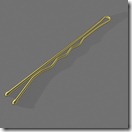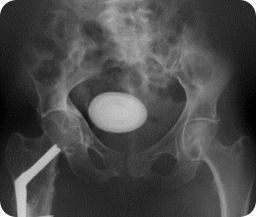Category Archives: Surgical
Ancient medical specialty that uses operative manual and instrumental techniques on a patient to investigate and/or treat a pathological condition.
Urethral Foreign Visitors
The bladder has being known for developing calculus, but some of those times, the calculus were caused by none other than the person who has them. How can foreign objects be introduced into one’s bladder? They generally gain entrance through one of the natural passages, as a rule being introduced, either by curiosity or for perverted satisfaction, or sometimes because it helped with a disease.
Once, a doctor mentioned something about a long wax taper (a candle) that was introduced into the bladder through the urethra of a man, at the University Hospital, Philadelphia, by median cystotomy1, a long wax taper was extracted, it is said that it was used for masturbation. Another case is known about a 35 year-old man who practiced urethral masturbation with the tail of a squirrel, and 3 caudal vertebraes from the animal were found in the center of a vesical calculus taken from the bladder.
But this matter seems to be more common on women, the urethra of the females is short and dilatable, it’s about 1.5-2 inches long, but that doesn’t keep foreign bodies to be found inside the bladder.
In January 24th of 1874, Doctor Whiteside described a case in which a foreign body introduced into the bladder was mistaken for pregnancy. The girl was 17 years-old and she had missed several times her menstruation, the symptoms where there, nausea, vomits, tender and voluminous breasts, and the nipples were surrounded by a somber areola, also the abdomen was more developed than usual. After periods of cessation of menstruation, she started having incontinence of urine, the urine also had disagreeable odor and it was high on albumino us, specific gravity, and alkaline. In spite of all the symptoms the uterus wasn’t having any augmentation in the size, then the doctor recurred to the introduction of a catheter and it showed the existence of a large calculus, after surgery the calculus was put under chloroform and it came to be the handle of a tooth-brush (shown figure 2), at first the young woman would give no explanation for its presence, but then she explained that she had been using it for relief in retention of urine, so one day it must’ve fallen into the bladder.
us, specific gravity, and alkaline. In spite of all the symptoms the uterus wasn’t having any augmentation in the size, then the doctor recurred to the introduction of a catheter and it showed the existence of a large calculus, after surgery the calculus was put under chloroform and it came to be the handle of a tooth-brush (shown figure 2), at first the young woman would give no explanation for its presence, but then she explained that she had been using it for relief in retention of urine, so one day it must’ve fallen into the bladder.
 Another report show the case of a woman who habitually introduced hair-pins into her bladder, she did this in attempt at dilatation of the urethra in the relief of a case of strangury2. Sometimes, UTI’s (Urinary Tract Infections) if not treated, they tend to be quite dangerous, let’s look at this curious case, a woman introduced a hog’s penis (also known as pig’s penis) into her urethra. It was removed by an incision into this canal, but then the patient suffered septicemia3 and died. Septicemia can be developed after an infection, but specially in the urethra, it is a grave infection and it is potentially deadly, it gets worse very quickly and it can surge from infections all over the body, including pulmonary infections, abdomen etc. UTI’s can also cause pyelonephritis4.
Another report show the case of a woman who habitually introduced hair-pins into her bladder, she did this in attempt at dilatation of the urethra in the relief of a case of strangury2. Sometimes, UTI’s (Urinary Tract Infections) if not treated, they tend to be quite dangerous, let’s look at this curious case, a woman introduced a hog’s penis (also known as pig’s penis) into her urethra. It was removed by an incision into this canal, but then the patient suffered septicemia3 and died. Septicemia can be developed after an infection, but specially in the urethra, it is a grave infection and it is potentially deadly, it gets worse very quickly and it can surge from infections all over the body, including pulmonary infections, abdomen etc. UTI’s can also cause pyelonephritis4.
So please, we’ve come to the conclusion that urethras are for expulsing urine, and no more. You cannot introduce any type of thing, and if you still want to, be careful, you don’t want to appear in any of these stories, or do you?. After a foreign object has been introduced into the urethra it is very possible to be slipped into the bladder and cause a calculus and/or infection. The calculus is formed because bladder may cover the object with calcareous deposits or be covered by mucus and folds of the bladder.
1- Cystotomy is the surgical removal of a stone in the urinary bladder.
2– Strangury is the symptom of painful, frequent urination of small volumes that are expelled slowly only by straining and despite a severe sense of urgency.
3– Septicemia is the presence of bacteria in the bloodstream (also known as bacteriemia) and it tends to be associated with grave infections.
4– Pyelonephritis is a kidney infection. It is usually bacterial in origin and stems from an infection in another part of the urinary tract, such as the bladder.
